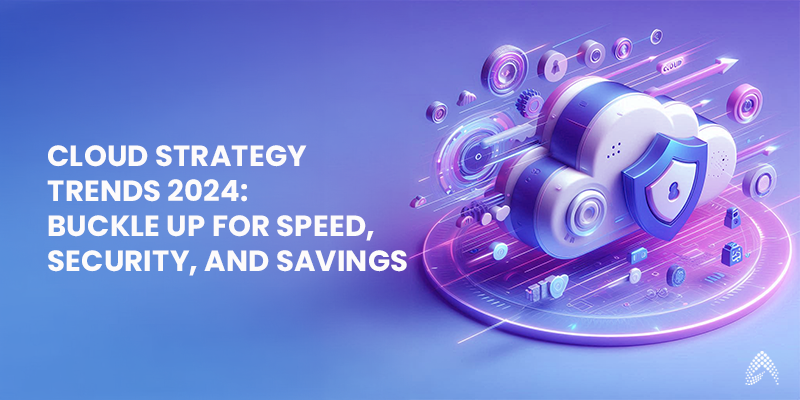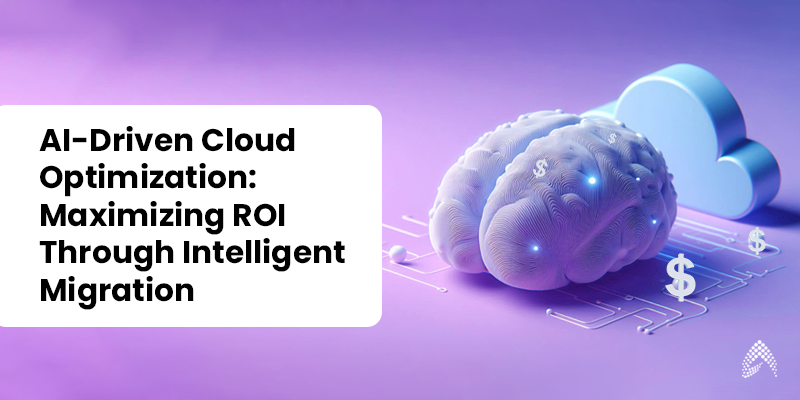
Remember those days when businesses were shackled to their on-premise data centers, struggling with maintenance, scalability, and security? That’s ancient history.
Today, organizations are eagerly transitioning their legacy systems to the cloud to unlock new opportunities for innovation, flexibility, and cost-effectiveness.
Take, for example, a retail giant struggling with Black Friday / Xmas traffic surges. Their on-premises infrastructure would buckle under the load, leading to lost sales and customer frustration. The cloud offers a scalable solution, ensuring seamless shopping experiences even during peak traffic by optimally allocating resources.
The public cloud market saw end-user spending of about 561 billion U.S. dollars in 2023 and is expected to grow to approximately 825 billion U.S. dollars by 2025 [Statista]. Numerous factors, such as the growing demand for as-a-service models, hyper-automation, faster development and deployment, and low maintenance in the long run will drive this.
Moving forward, cloud migration and modernization projects will not just be confined to saving time and money. They will even empower teams to accelerate their development and deployment capabilities to meet ongoing customer demands while meeting innovation and agility at scale.
Emerging use cases across industries make it clear that cloud migration is key to ensuring success and growth. Here are the top 5 cloud strategy trends you must know in 2024 and beyond.
1. Multi-cloud and Hybrid Cloud Strategies: A Reliable Way For Business Scalability
If you still rely on a single cloud service provider, it’s time to rethink and adopt multi or hybrid cloud solutions to transform your business’s digital landscape.
1. Multi-cloud:
Are you ready to supercharge your business’s scalability? Embracing a multi-cloud architecture means harnessing the power of public and private clouds from various providers to turbocharge your performance, scalability, and flexibility, all while avoiding vendor lock-in.
In fact, a recent study projects that multi-cloud adoption will skyrocket to 86% by 2024, leveling the playing field for startups and small to medium-sized businesses in the digital landscape.
Even large enterprises with over 5,000 employees are jumping on the multi-cloud bandwagon to skyrocket their results and foster unparalleled collaboration.
Use case:
If unforeseen downtimes and disruptions happen, business continuity might be at stake due to a lack of disaster recovery strategies. Here, multi-cloud architecture finds its way into improved disaster recovery by quickly recovering data from other clouds.
2. Hybrid Cloud:
Looking for the perfect cloud solution? Hybrid cloud architecture offers the best of both worlds by combining public and private clouds with on-premises data centers. This allows you to manage workloads across different environments, meeting your unique business needs.
With a hybrid cloud migration strategy, you can still make the most of your on-premises services while benefiting from the vast storage and accessibility options public cloud providers provide for your data and applications.
IT professionals are increasingly turning to hybrid cloud solutions, with over 60% considering them the ideal answer to today’s expanding IT infrastructure demands.
Use case:
Hybrid cloud architecture is used for big data analytics, where you can store massive amounts of data in a public cloud and scale as required. At the same time, they can process their data using a private cloud, ensuring that sensitive data is kept safe and under the business’s control.
Learn more about different cloud adoption methods.
2. Cloud Computing Goes To The Edge: No Latencies in Data Processing
Don’t let latency hold your business back when dealing with real-time data processing. In typical cloud computing setups, data has to travel back and forth between the device and the data center, causing delays, performance problems, and impacting decision-making. Let’s keep your data moving without any bottlenecks!
Get ready for the next big thing in cloud technology: Edge Computing. This cutting-edge framework brings data storage and processing as close to the original device as possible, making it modern and futuristic.
With the rapid rise in the use of IoT devices across industries, the demand for edge computing is skyrocketing. Experts predict that IoT devices will reach a staggering 27 billion by 2025, generating over 50 zettabytes of data.
Consider you are in the healthcare industry:
You know that delays can sometimes be a matter of life and death. The Internet of Medical Things (IoMT) has revolutionized healthcare, offering personalized 24/7 patient care. However, managing and securing patient data presents significant challenges.
Amid the ongoing threat of data breaches and cyberattacks, traditional cloud computing methods are no longer enough. That’s where edge computing comes in. By keeping critical patient data locally with advanced security measures, edge computing reduces the risk of data breaches.
According to a Gartner report, organizations using edge architecture experience 25% fewer cyberattacks.
How to secure your infrastructure:
Zero trust security policy, which relies on granular access policies and specific security controls, is the key to securing infrastructures and data in edge computing. This is enforced through Identity and Access Management (IAM) solutions and edge security technologies like SASE (Secure Access Service Edge).
To evaluate trust, advanced machine learning tools like user and entity behavior analytics (UEBA) provide context-based analyses of account trustworthiness. With edge computing and zero trust security, healthcare data can be safer and more secure than ever.
3. AI and ML Integration: Become Smarter Than Ever
Are you ready to witness the remarkable transformation of businesses migrating their workloads to the cloud? The fusion of Cloud and AI & ML is revolutionizing the realm of hyper-automation and cloud adoption, giving birth to Cloud Performance Engineering (CPE) – a critical discipline ensuring that cloud systems are optimized for performance, reliability, and scalability.
Imagine a world where AI-driven analytics and ML algorithms predict and mitigate performance bottlenecks, enhance resource allocation, and boost overall system resilience. The powerful synergy between AI, ML, and Cloud creates self-optimizing and self-healing cloud architectures, ushering in a new era of enhanced cloud performance.
Integrating AI and ML into CPE has completely revolutionized predictive analytics, allowing cloud architects to proactively combat performance degradation and safeguard end-users from potential impacts. Additionally, AI-powered anomaly detection systems swiftly identify abnormal patterns in real-time, enabling automated responses to effectively mitigate any issues.
But wait, there’s more – AI and ML are essential for boosting the security and compliance of cloud environments. These revolutionary technologies keep a vigilant eye on cloud systems for security threats and ensure they adhere to industry regulations. This dynamic coupling of AI, ML, and Cloud is truly reshaping the landscape of cloud performance engineering.
4. Serverless Architecture: Infrastructure Management Becomes Easy
Serverless Architecture is a game-changer in cloud computing, shifting the focus from server management to coding and deployment. This approach offers a host of benefits, making it an exciting option for businesses looking for speed, efficiency, and real-time capabilities.
With traditional cloud setups, dealing with servers can be a real headache – from setting them up to managing and scaling them. It’s a complex and resource-intensive process.
But with serverless, developers can just focus on writing code and let the cloud provider handle the rest. That means no more worrying about infrastructure management, hardware maintenance, or security updates. On top of that, serverless architectures automatically adjust to handle fluctuations in traffic. It’s a win-win!”
Here are 4 best practices to ensure a smooth serverless journey:
- Master the Art of Small Functions: Transform complex logic into small, focused functions for top-notch scalability and efficient resource utilization.
- Embrace the Power of Asynchronous Communication: Say goodbye to delays! Embrace asynchronous messaging for independent function execution and lightning-fast responsiveness.
- Make Observability a Priority: Implement rock-solid logging and monitoring practices to track function execution, spot errors, and troubleshoot with ease.
- Conquer Cold Starts: Beat the “cold start” blues! Optimize your code to minimize initialization time and explore techniques like keeping functions warm with periodic invocations to reduce cold start delays.”
5. Cloud-native Development: 2x Your Development and Deployment Time
Say goodbye to the old “lift-and-shift” cloud migration approach! Embracing cloud-native development is the way of the future. By designing and building applications to harness the cloud’s strengths, such as scalability, agility, and elasticity, we can supercharge innovation and transform the way we work.
Here’s why it’s the future:
- Rapid Innovation: With Cloud-Native’s Microservices architecture, we can break down applications into smaller, modular components that can be independently developed, deployed, and scaled. This means teams can innovate quickly and make changes easily.
- Scalability Superpowers: The cloud-native development approach leverages Containerization to ensure consistent execution across any cloud environment. Resources can automatically scale up or down based on demand, optimizing costs and performance.
- Rock-Solid Resilience: Thanks to the microservices architecture, applications become more resilient to failures. If one service encounters an issue, it won’t bring down the entire application. This ensures high availability and a seamless user experience.
- DevOps Harmony: Cloud-native principles seamlessly align with DevOps practices. Automation, CI/CD, and Infrastructure as Code (IaC) streamline the development and deployment process, promoting collaboration between development and operations teams.
Learn how DevOps and Cloud integration can 2x your development and deployment time.
5 Best Practices for Cloud-Native Development:
- Microservices Architecture: Break down applications into independent, loosely coupled microservices to achieve greater agility and scalability.
- Containerization: Use containerization technologies like Docker to bundle applications and their dependencies, ensuring consistent execution across different environments.
- Embrace DevOps: Incorporate automation, CI/CD pipelines, and IaC to streamline development, testing, and deployment processes.
- API-Driven Communication: Employ APIs for communication between microservices to promote loose coupling and enable integration with external systems.
- Focus on Observability: Implement strong monitoring and logging practices to gain deep insights into application health and performance.
Embracing a cloud-native approach unleashes the complete power of the cloud. This enables businesses to innovate faster, scale more effectively, and enhance their resilience, positioning them to lead in the constantly changing digital environment. Therefore, instead of adopting a “lift-and-shift” mindset, it’s crucial to embrace the future by building cloud-native for a competitive advantage.
Looking ahead into the future:
Remember, moving to the cloud is not just a one-time effort. With the changing business environment, it’s crucial to have a flexible business model that can easily adjust to growth or change without any interruptions.
Have you considered migrating your workloads to the cloud to free up more time for business expansion and productivity?
Let’s get in touch to talk about your business objectives and requirements.

Author: Venkat Bonam
Director – Global Delivery
Driving innovation and leading high-performance teams to create impactful digital solutions that drive business growth and exceed customer expectations.



